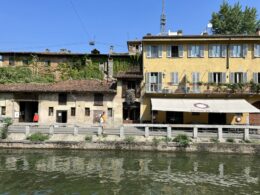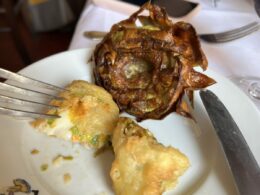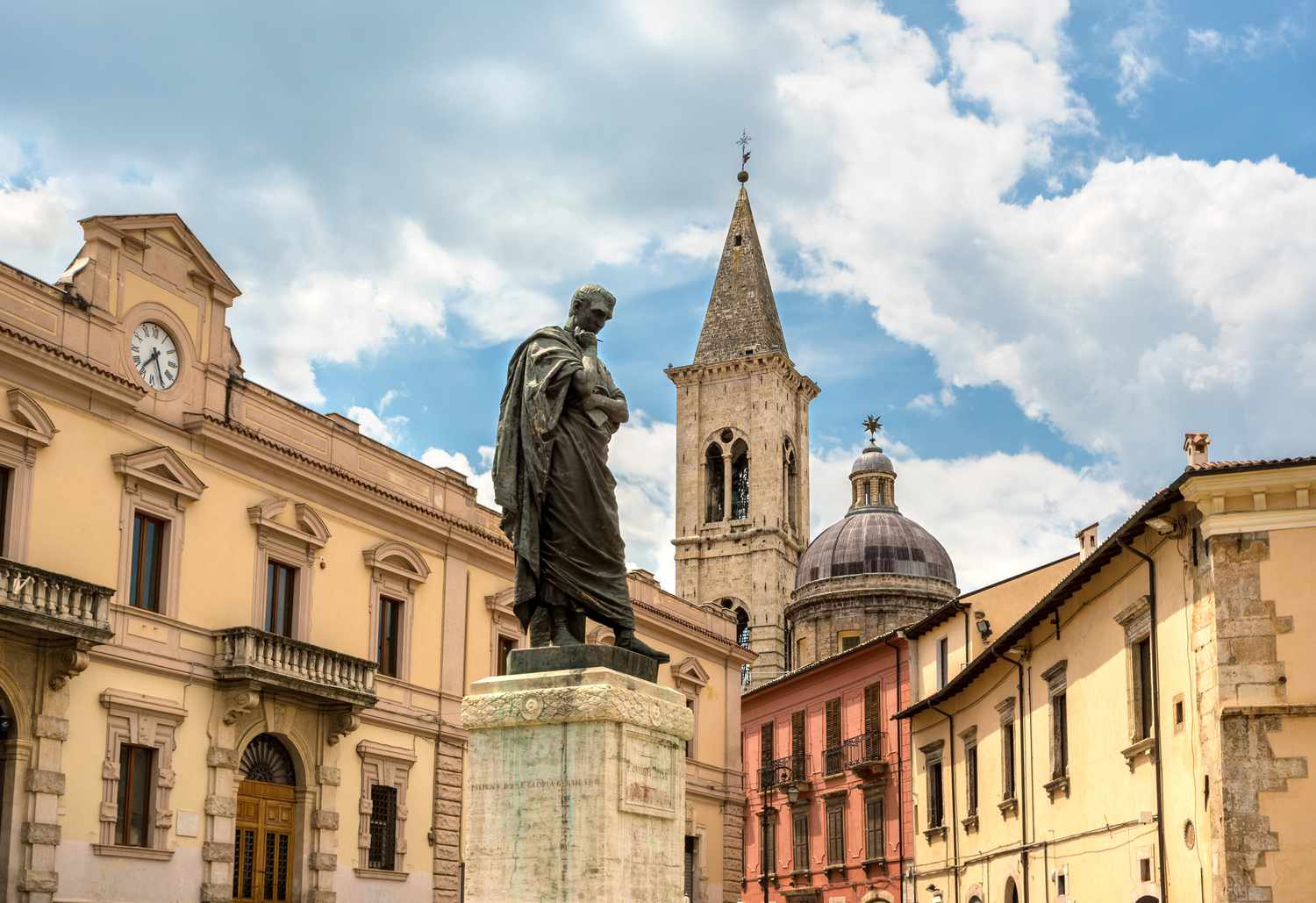This time, I will tell you about the Neapolitan low-calorie cuisine)))
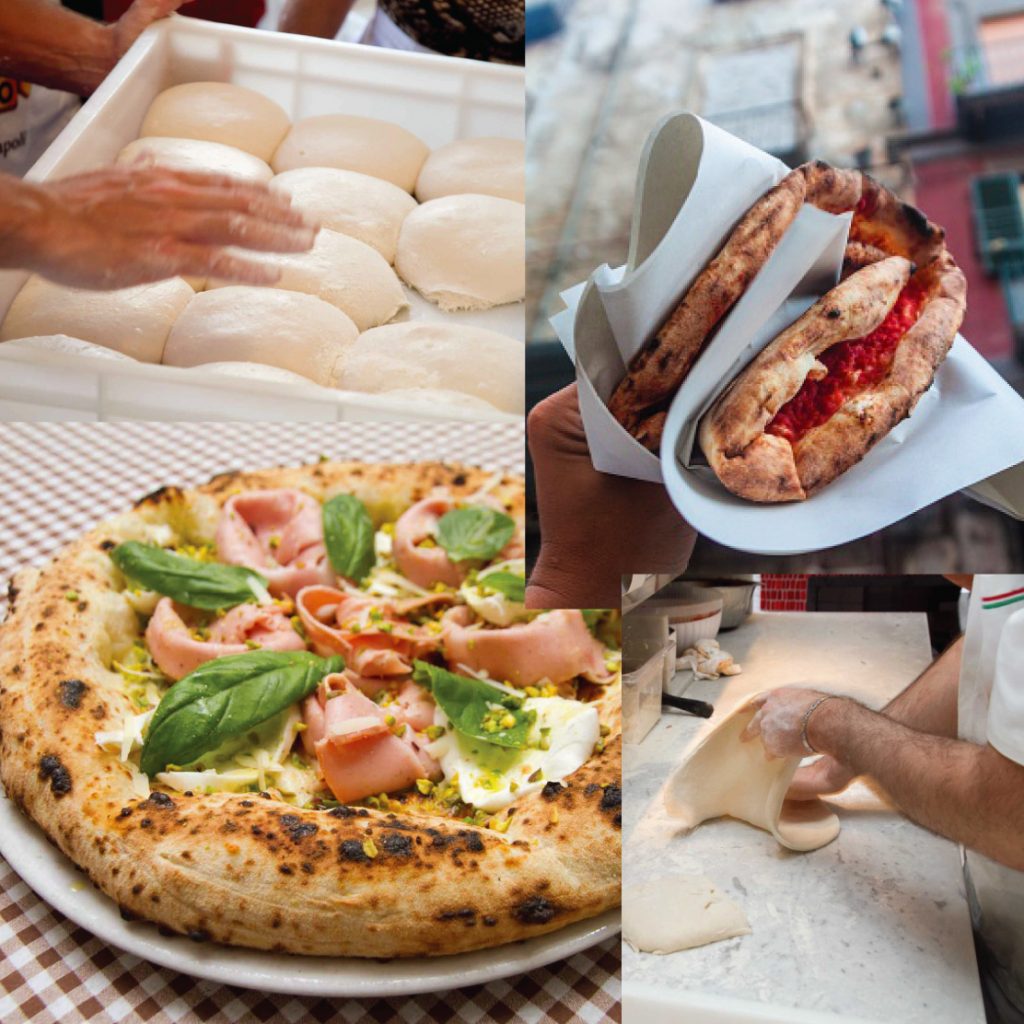
Let’s start with pizza! After all, it all started in Naples. Today, you can find a huge variety of pizza, but the very first and most famous pizza in the world was born in Naples! Just think, the first pizza appeared in 1600. Originally, it was a pizza made of bread dough, cooked in a wood-fired oven, sprinkled with coarse salt, melted lard, garlic, cheese, and basil. Later, tomatoes were brought to Italy from Peru by Spanish colonizers, and pizza began to change. But it was only in 1889 that the famous “Margherita” pizza appeared, which includes mozzarella, tomatoes, and basil! This pizza was prepared on the occasion of the arrival of King Umberto and Queen Margherita in Naples by the best chef of those times, Raffaele Esposito. Actually, three pizzas were prepared, but it was the Margherita pizza that Queen Margherita liked the most. Hence the name of the most famous pizza. And of course, the Margherita pizza and its colors reflect its sacred origin (white – mozzarella, red – tomatoes, and green – basil)!
Now let’s figure out… What is this pizza really?! Forget about crispy crust, pineapples, salami, and…. ? Real Neapolitan pizza after cooking should be soft, elastic, easily foldable, and have classic bread-flavored edges.
Now, for the dough ingredients: double zero soft wheat flour, sometimes reinforced with type 0 grain (Manitoba), yeast, and salt. The fermentation time is also important, divided into two stages: the first stage is 2 hours, and then the dough is divided into 200g balls and left for another approximately 6 hours.
Of course, I won’t limit you with the filling, but remember that for Italians, the quality of the ingredients plays a crucial role. The best tomatoes, the best mozzarella, the best olive oil… it is a big misconception that the dough is more important than the filling and you can’t spoil pizza with anything! Pizza should be baked exclusively in a wood-fired oven! The temperature should not exceed 485°. BUT! I know that there are now electric ovens that simulate wood-fired ones, and the result is almost identical… but I still prefer the result of a wood-fired oven!
Now, a little about the Neapolitan habit. Neapolitans call their pizza “portafoglio,” which means wallet/booklet, and this name determines the shape of the pizza. This pizza is bought on the street, and for convenience, the pizza is folded together with a sheet of food paper into 4 parts, like a wallet.
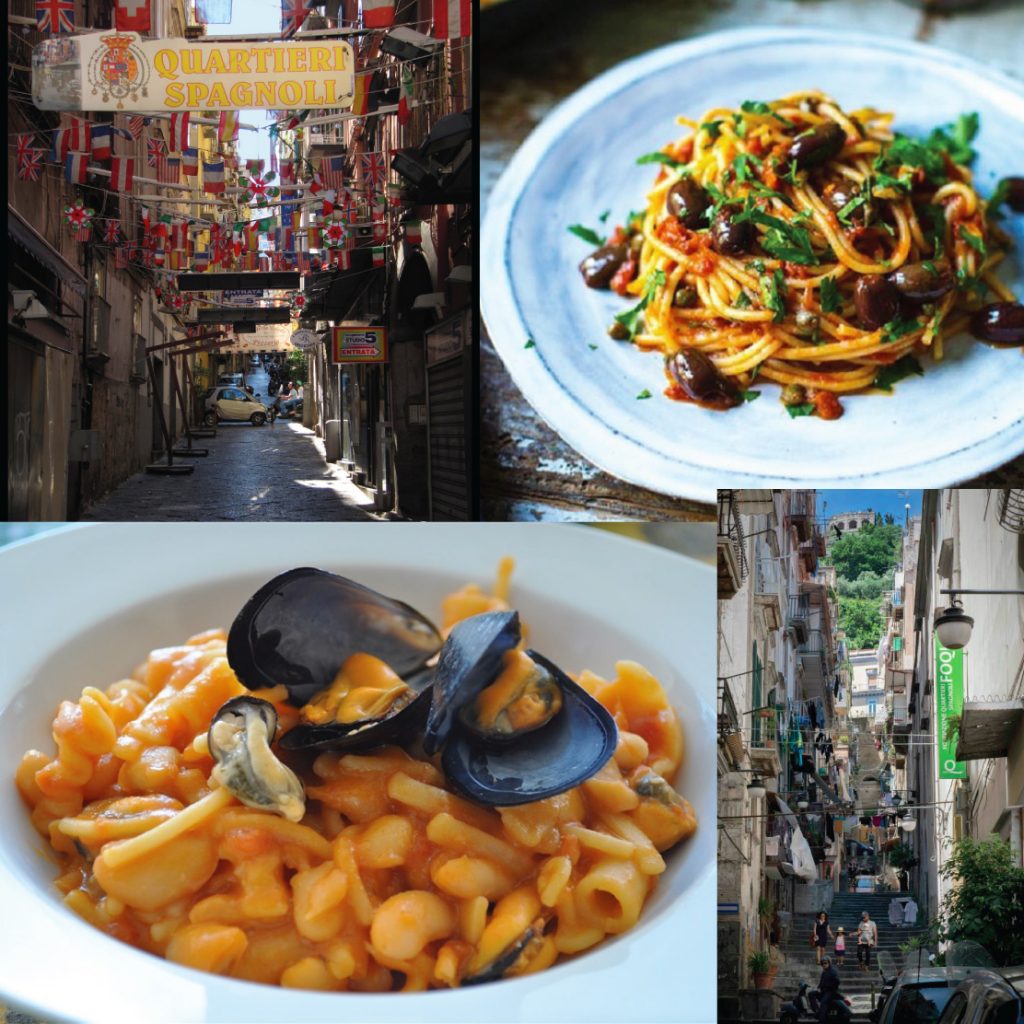
The pasta dish “Spaghetti alla Puttanesca” … I have no doubt that the name itself caught your attention. In fact, there is an explanation for this name, and let’s clarify this point before moving on! There is a legend that the idea for this sauce was proposed by the owner of a “house of meetings” in the Spanish quarter of Naples, while according to other legends, the name of this rich sauce reflected the bright colors of the clothing worn by ladies of the night in those times.
But let’s get back to the kitchen. This sauce is made with tomatoes, black Gaeta olives, garlic, capers, and oregano. Nowadays, not only spaghetti, but also other types of short pasta are used.
“Fagioli e Cozze” which translates to “Beans and Mussels” – when did this dish appear? Only 2000 years ago! In fact, there are several types of this dish belonging to different regions of Italy, but today I will tell you about the Neapolitan version. The Neapolitan dish is characterized by cooking pasta together with beans. With this type of preparation, all the starch is preserved, which would be lost if the pasta was drained. Another characteristic of this Neapolitan dish is the mix of different types of pasta, and as for the beans, only white “cannellini” beans are used… which creates that unique creamy texture. This dish is made with mussels, mixed type pasta, white beans, garlic, tomatoes, parsley, black pepper, and olive oil. And it is usually prepared from May to August – during the peak season of mussel harvesting!
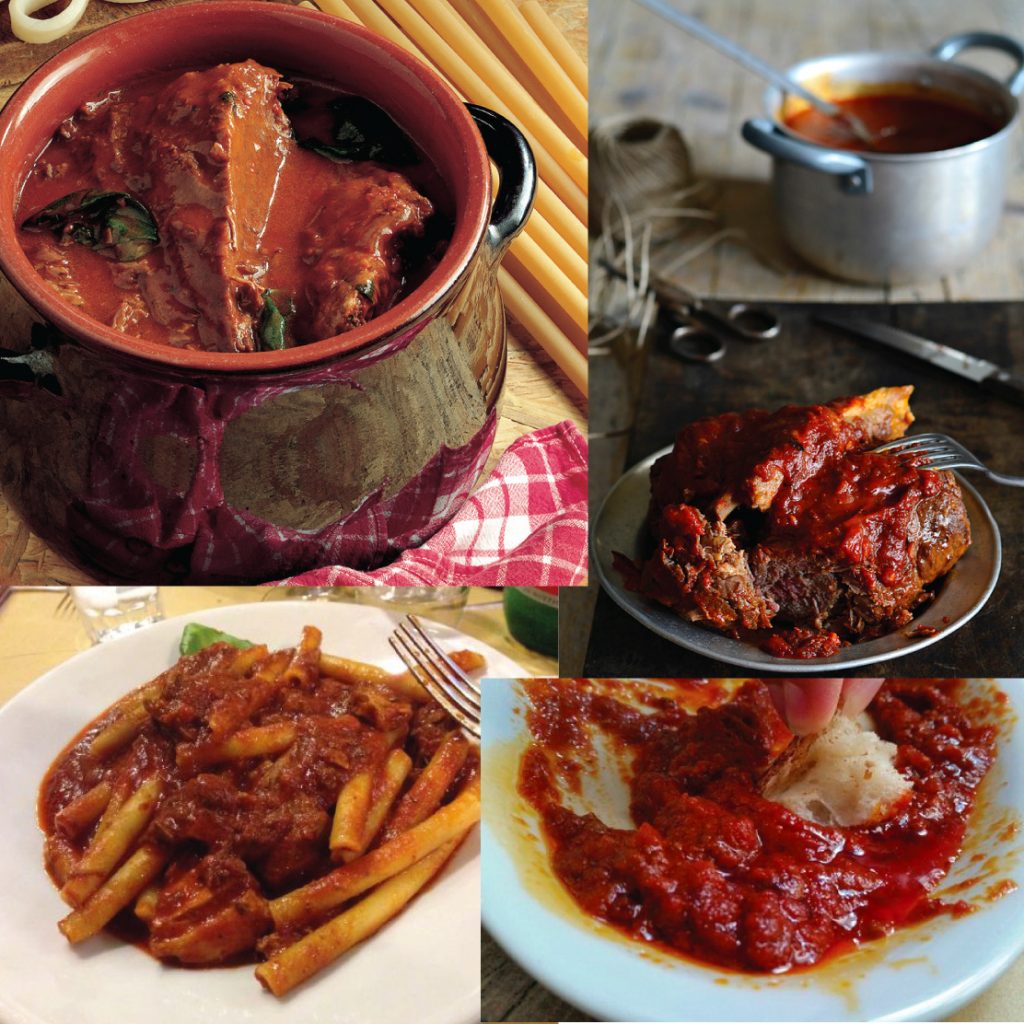
Neapolitan ragù is a sauce with a long history, and the roots of this dish date back to the Middle Ages. Of course, the recipe has undergone some changes since then. It should be noted that the word “ragù” is actually French. And before we talk about traditional Neapolitan ragù, let’s note that long before the birth of this dish in Naples, there was a dish called “Daube de Boeuf” in medieval Provençal cuisine. It was stewed beef, very tough parts, cooked for many hours with vegetables in a clay pot, and this dates back to the 13th/14th century.
In the 18th century, this dish began to appear in Neapolitan cuisine, but already as a rich dish, prepared from the best parts of beef or veal, but without tomatoes yet. Later, with the appearance of tomatoes in Italy, the recipe underwent changes. Initially, ragù was prepared for Sunday lunch, and it was started on Saturday evening. The characteristic of Neapolitan ragù is that the meat was used in large pieces, not ground as we are used to seeing. Usually, the sauce is used separately for pasta, and the meat is served as the main course. Nowadays, the cooking time is much shorter, but still no less than 4/5 hours.
So, what do you need to make this incredibly fragrant and delicious dish? Beef (preferably shoulder), veal cutlets, pork ribs, onion, lard, smoked bacon, olive oil, dry red wine, tomatoes, fresh basil, salt, and water. For the stuffing: raw ham, smoked bacon, black pepper, thyme, pine nuts, raisins, pecorino cheese, garlic, cloves, parsley, salt, and pepper. The stuffing is placed inside the meat, tied with kitchen twine, browned, and then stewed. After 5 hours, it’s ready!
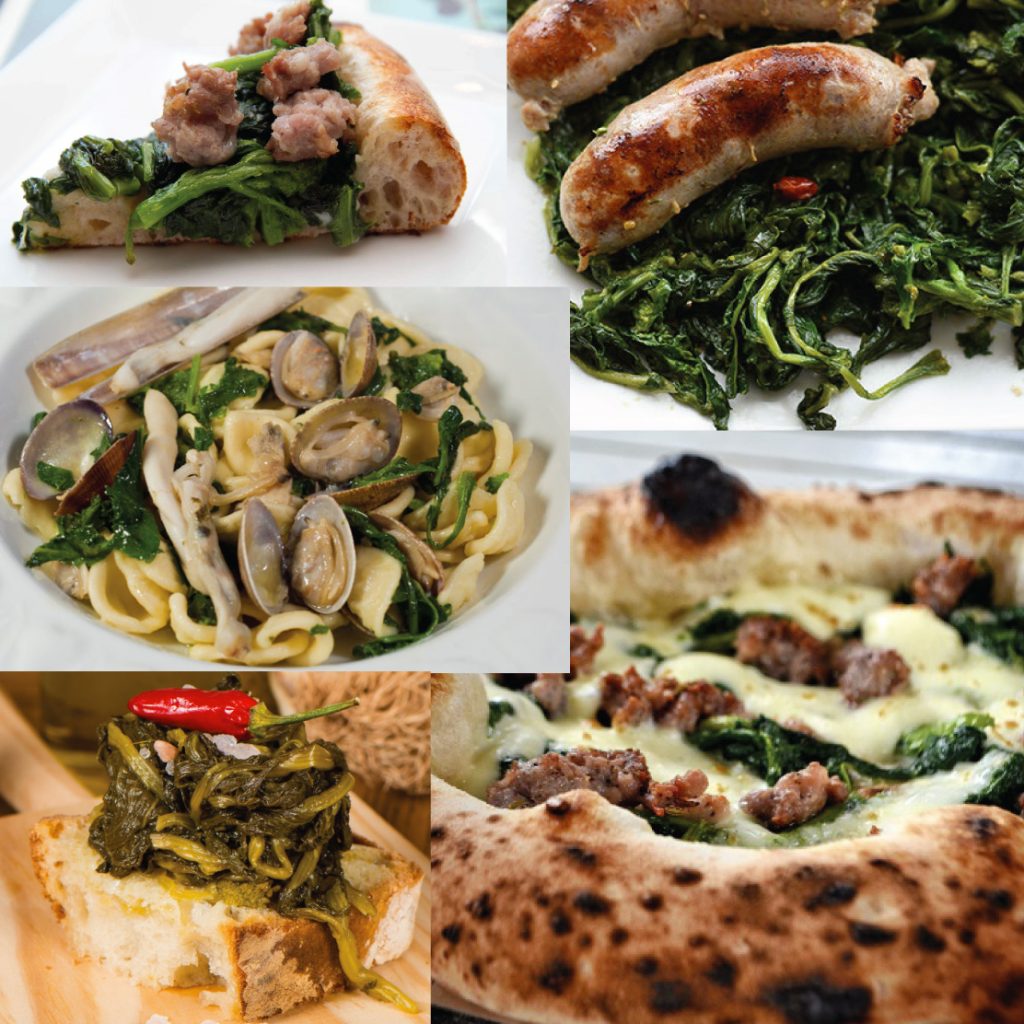
Friarelli is derived from the Neapolitan dialect word “frijere,” which means to fry. It uses the upper and most tender part of the turnip, garlic, chili, and olive oil. All the ingredients are fried over high heat and usually served as a side dish to meat. But you can also find these vegetables on pizza, pasta, and even on bruschetta! It is very delicious. Everything is very simple, so you can try to prepare these vegetables at home!
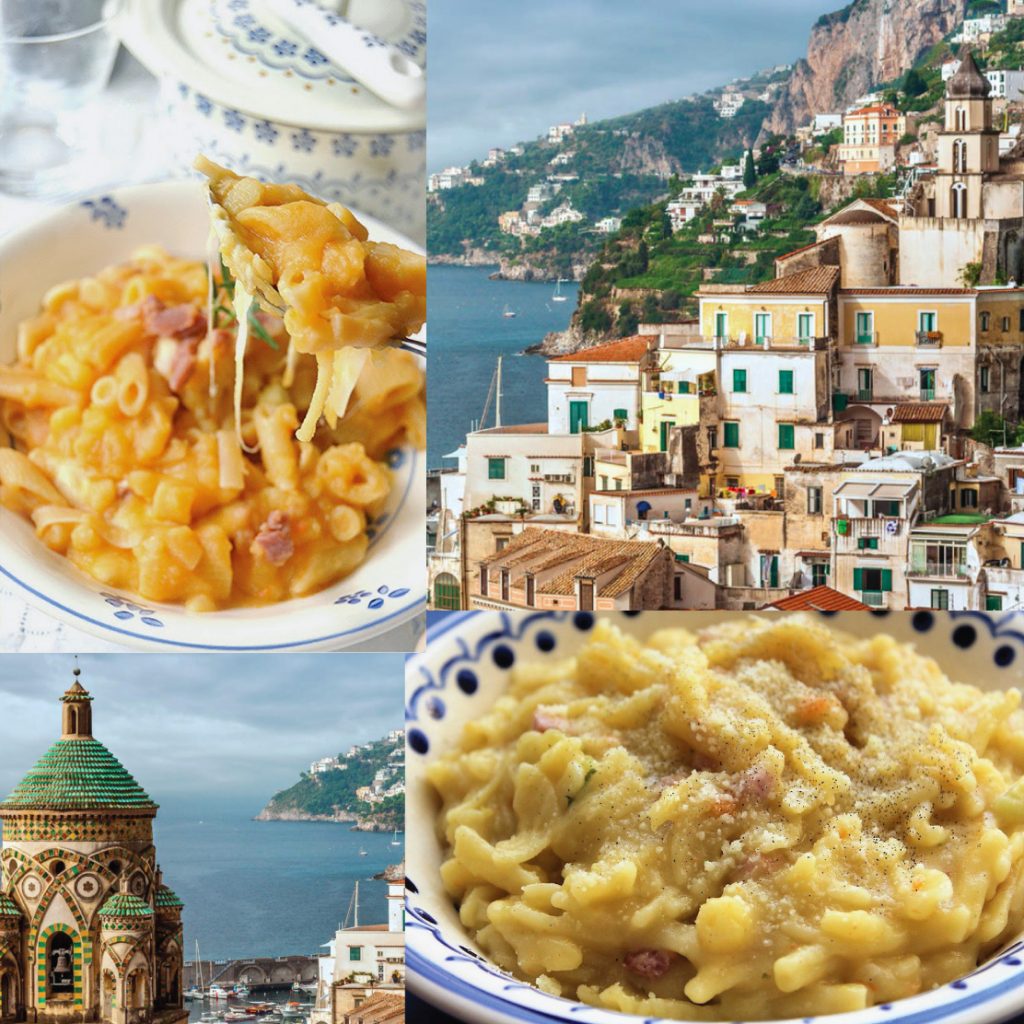
“Pasta and potatoes” is a traditional Neapolitan dish with humble origins. This dish was born in the 17th century when potatoes and tomatoes were not expensive ingredients and therefore were beloved by housewives. Pasta was also included in this list. It should be noted that this dish, born from the union of two carbohydrates, can be proud of both its satisfying properties and its taste.
Today, there are many variations of pasta and potato dishes, but the traditional version requires the dish to be prepared with mixed types of pasta (specifically, with leftovers of different types of pasta). Some popular trattorias in Naples still test the dish by flipping the plate to prove the authenticity of the recipe. The pasta should remain on the plate even when it’s upside down! But of course, the recipe has been updated and now there are many variations. Some add tomatoes, some add provola cheese, and so on.
The traditional recipe includes celery, onion, olive oil, salt, carrots, basil, tomatoes, potatoes, mixed pasta, cheese (Parmesan or Pecorino), provola (optional), cubed prosciutto, and pork rind. I’m thinking of making it soon! Saute finely chopped celery, onion, and carrots in olive oil over low heat. Then add cubed prosciutto (or bacon if there is no prosciutto) and cubed pork rind. Add tomatoes, cubed potatoes, and water. Cook on low heat for 20-25 minutes. Then add mixed pasta and cook until done, but not overcooked. Add Parmesan cheese cut into small pieces and turn off the heat. The consistency should be creamy and thick enough. Let your “pasta and potatoes” sit for a couple of minutes and you can add a little more Parmesan cheese and basil. Some people add provola cheese, cubed as well! Now… let’s move on to Neapolitan sweets.

The Neapolitan “babà” is an interesting dessert that was actually invented or at least its recipe was created by the Polish king (1704-1735) Stanisław Leszczyński. The king was bored and the climate was not helping, so he needed some rum from time to time to warm up. Rum turned out to be the key ingredient in creating this delicious dessert. The king had a sweet tooth, but his personal chef always prepared the same dry and unappetizing dessert. One day, a bottle of rum accidentally spilled into the dessert, and the king tried it. This is how the babà was born. Later, the dessert reached Naples, where it took on its mushroom-like shape and name. Why babà? The dessert was named after Ali Baba from the Arabian Nights, which the king loved to read. There are many versions of babà now, with whipped cream, cream, strawberries, and more, but the original is a babà that is not too soaked in rum, but not dry, and without any other additions. The ingredients include flour, butter, sugar, eggs, yeast, salt, and for the syrup: water, sugar, and rum! It is actually very tasty for those who don’t mind a little alcohol in their dessert. After all, alcohol is present in the preparation of many recipes, in very small amounts.
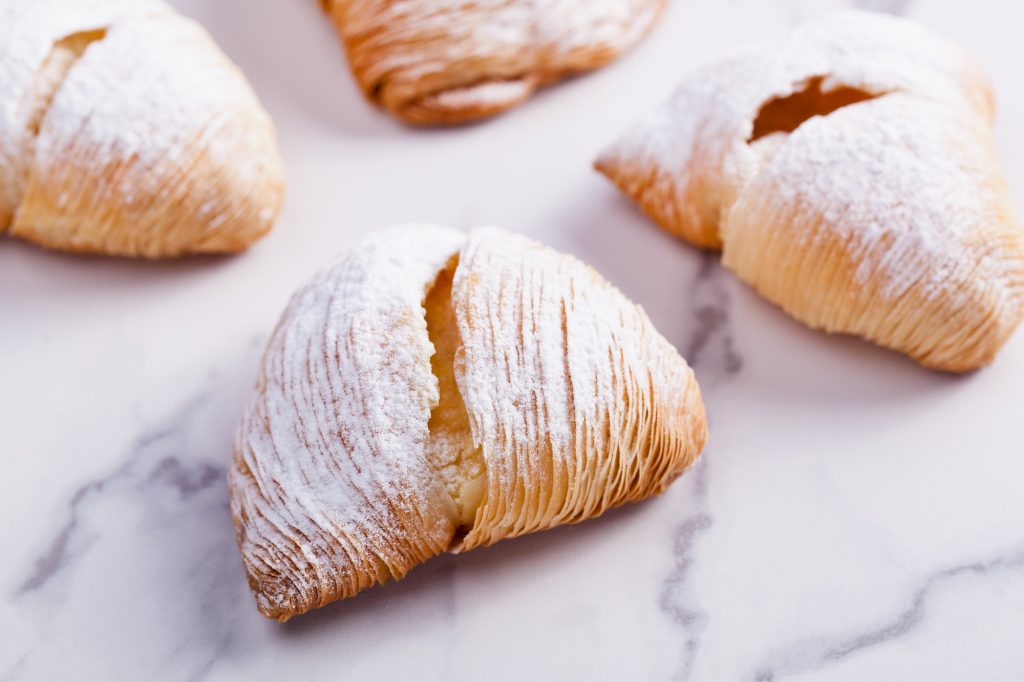
Сфольятелла – The tradition of sfogliatella dates back to 1600 on the Amalfi Coast (Salerno), specifically in the areas of Furore and Conca dei Marini, where the Santa Rosa monastery was located and inhabited by secluded nuns. One day, a nun decided to try something new and unusual, deviating from her usual routine. She noticed leftover semolina soaked in milk and decided to experiment with it. The nun mixed the semolina with ricotta, lemon liqueur (limoncello), and dried fruits. She then rolled out pastry dough, added wine and melted lard, and enclosed the filling between two thinly rolled-out sheets of dough. The shape of this pastry resembled a monk’s hat, thus creating the dessert known as Santa Rosa, named after the monastery, which became an instant hit with the locals. However, it took 200 years for the dessert to reach Naples. The traditional recipe was rediscovered and revised by Pasquale Pintauro, the owner of a small hotel on Via Toledo. He transformed his hotel into a famous pastry laboratory that has been passed down through generations to this day. Pintauro removed the cream and black cherry from the dough and changed the dessert’s aesthetics by wrapping the filling with a thin strip of puff pastry, which was then folded like a shell.
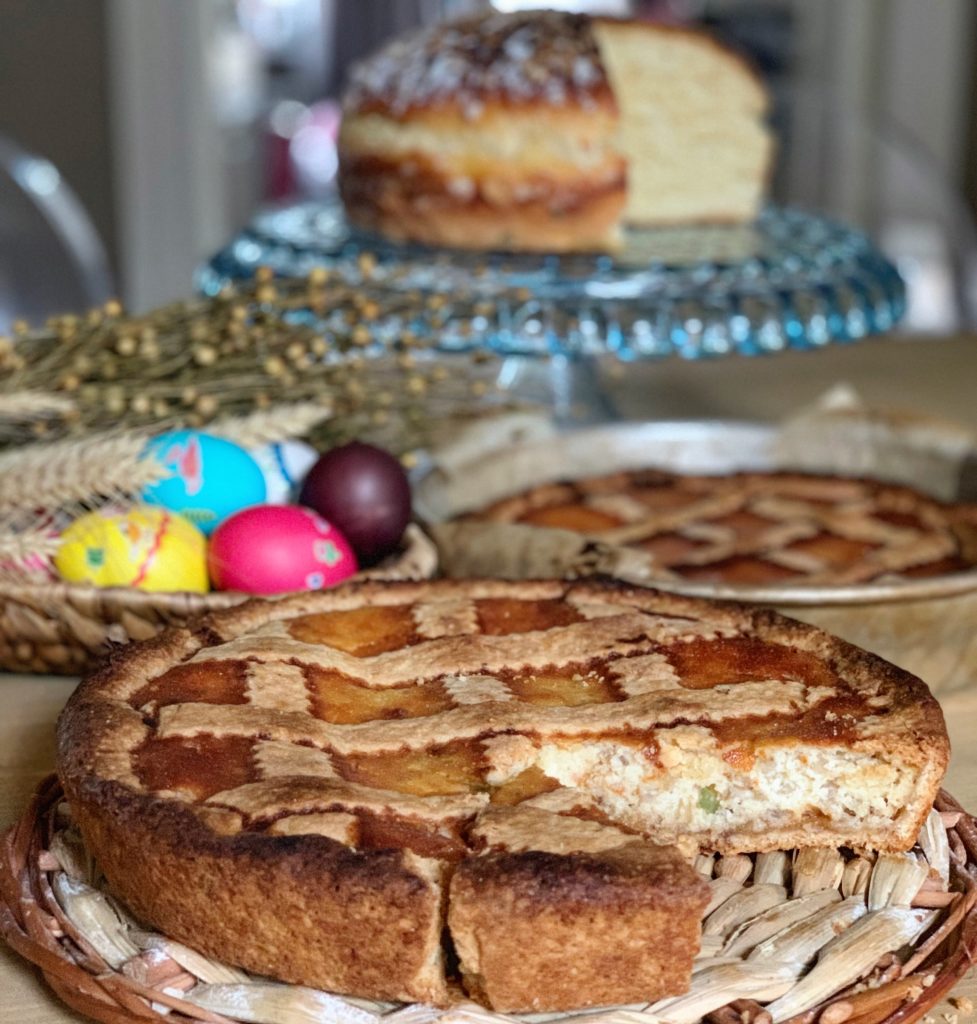
Neapolitan Pastiera is one of the main symbols of Neapolitan cuisine. This incredibly delicious cake combines family traditions with classic pastry school techniques. According to an ancient legend, Pastiera appeared when the wives of fishermen brought baskets filled with ricotta, candied fruit, wheat, eggs, and orange blossoms to the shore as offerings to the “Sea,” asking for their husbands’ safe return from the sea. The next morning, they returned to the sea to greet their husbands and noticed that the waves had mixed all the ingredients together, creating a cake in their baskets: Pastiera. Undoubtedly, this dessert, with its classic flavor that is not too sweet and refreshed with orange blossoms, was also present during ancient pagan holidays! The present-day version was developed in an ancient Neapolitan monastery that remains unknown. And today, no matter what happens, Pastiera must be prepared for the Easter feast in any Neapolitan family! But there is another legend! It is about Maria Teresa of Austria, the wife of Bourbon King Ferdinand II, who, at the insistence of her husband, known for his insatiable appetite, agreed to try a slice of Pastiera! At that moment, the queen was seen smiling in public for the first time! Ferdinand, in turn, did not miss the opportunity to joke: “It took Pastiera to make my wife smile, and now I have to wait until the next Easter to see her smile again.” Well… this legend also emphasizes the mood of the Neapolitans, namely the positive value of cheerfulness, a smiling face as an element of communication and shared life, and, conversely, how excessive seriousness is never appreciated. Neapolitans try to impress their interlocutors with a joke from the first seconds of meeting in the hope of eliciting a smile. And even Neapolitan Pastiera as a dessert can bring a smile to the face of a strict Habsburg queen! But let’s move on to the recipe! Believe me, it is divine and belongs to one of the most famous pastry shops in Naples!



